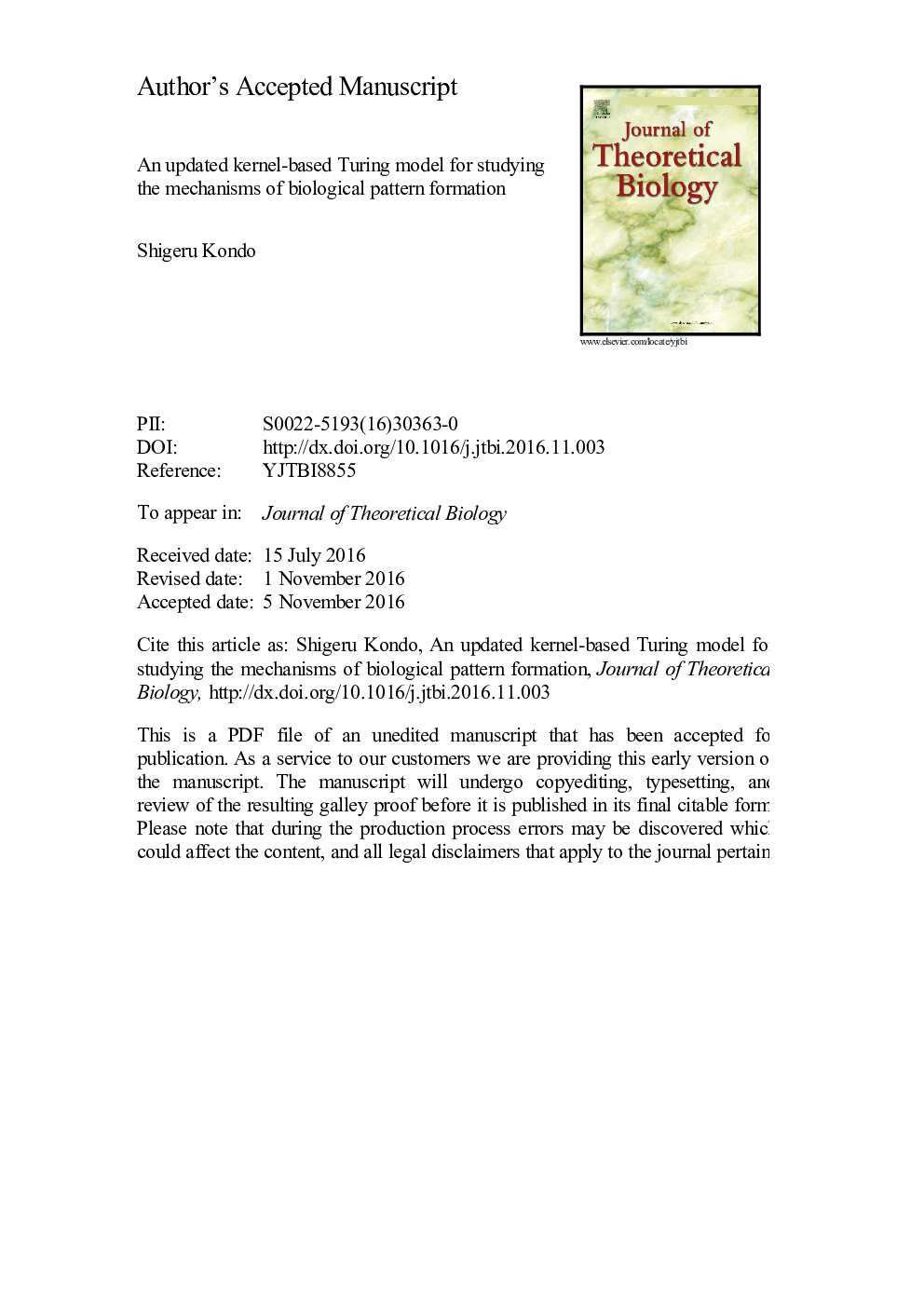| Article ID | Journal | Published Year | Pages | File Type |
|---|---|---|---|---|
| 5760218 | Journal of Theoretical Biology | 2017 | 22 Pages |
Abstract
This alternative model is not represented by partial differential equations, but rather by the shape of an activation-inhibition kernel. Therefore, it is named the kernel-based Turing model (KT model). Simulation of the KT model with kernels of various shapes showed that it can generate all standard variations of the stable 2D patterns (spot, stripes and network), as well as some complex patterns that are difficult to generate with conventional mathematical models. The KT model can be used even when the detailed mechanism is poorly known, as the interaction kernel can often be detected by a simple experiment and the KT model simulation can be performed based on that experimental data. These properties of the KT model complement the shortcomings of conventional models and will contribute to the understanding of biological pattern formation.
Related Topics
Life Sciences
Agricultural and Biological Sciences
Agricultural and Biological Sciences (General)
Authors
Shigeru Kondo,
